Seaports missing out on fee windfalls
A group of organisations, including representatives of ship agents and seaport associations, last week proposed that authorised agencies adjust the price for container handling services and the terminal handling charge (THC) to be closer to the average price in the region.
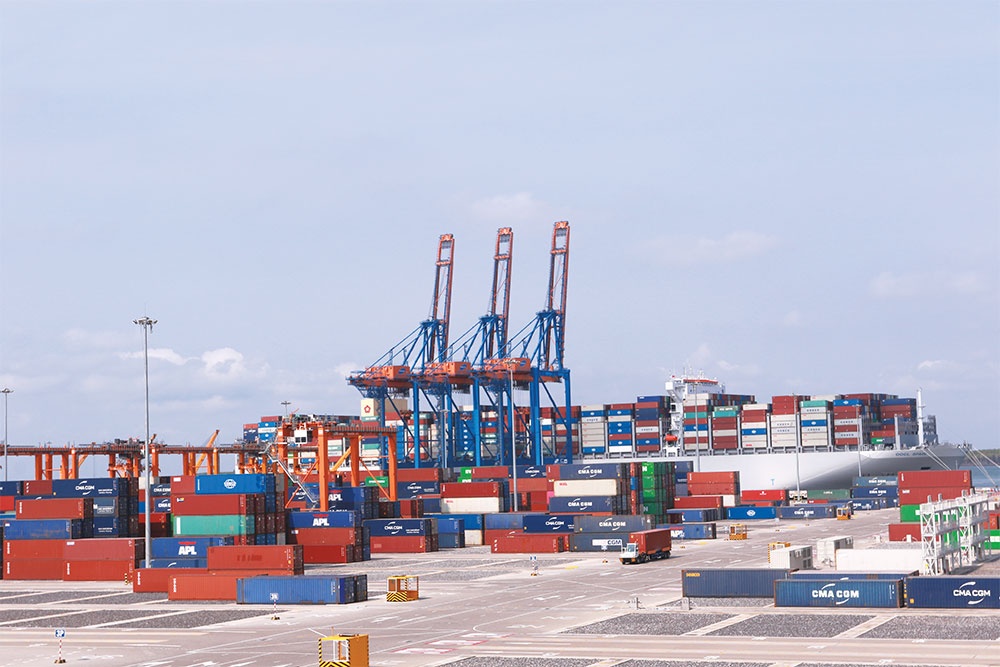 |
| Seaports missing out on fee windfalls |
According to the Vietnam Maritime Administration (VMA), the price of Vietnam’s seaport services is much lower than in the rest of the region, damaging the nation’s maritime economy.
“Vietnam’s seaport system needs large financial resources to reinvest and build larger and more modern seaports to improve capabilities and lure more regional transshipment goods,” said a representative of the VMA.
The associations suggested a minimum annual adjustment of 15-20 per cent, and a minimum three-year roadmap, starting from mid-2023, prioritising deepwater ports in Vietnam.
In their estimation, with this change it would take 4-5 years for the loading price of deepwater areas in Vietnam to reach the average price of the region.
At present, the loading fees are stipulated in Circular No.54/2018/TT-BGTVT on the charging for pilotage, wharf, dock, and mooring buoy utilisation, container handling, and towage services at Vietnamese ports.
Pham Quoc Long, chairman of the Vietnam Ship Agents Brokers and Maritime Services Providers Association, said the proposed increase was based on specific calculations.
“To compensate for the five-year price slippage from 2019 to now as well as high costs in the past, the Vietnamese container handling price needs to be adjusted up by at least 15 per cent,” said Long.
He added that when building ports, many determined a loading price of about $75-80 per 20-foot container to break even.
“At the same time, Vietnam’s container loading price is currently only half that of the region, while the investment and development of ports is almost the same,” he said
However, the proposed price is only the price of loading the container between ships and ports and not an adjustment of the price of lifting and lowering containers or vehicles at the port, because this is not stipulated in Circular 54.
“Currently, Lach Huyen and Cai Mep area ports are applying ceiling prices, but still lower than global prices and not enough for ports to turn a profit,” Long said.
In May 2022, the Cai Mep port cluster was ranked 11th out of the 370 best container ports in the world by the World Bank and S&P Global Market Intelligence.
“With the loading price only 40-50 per cent compared to the region, if the container throughput through the Vietnamese port system is about 25 million TEU (20-foot equivalent unit) per year, Vietnam loses about $1 billion per year,” said Pham Thi Ngoc Thuy, head of Private Economic Development Research under the Advisory Council for Administrative Procedure Reform.
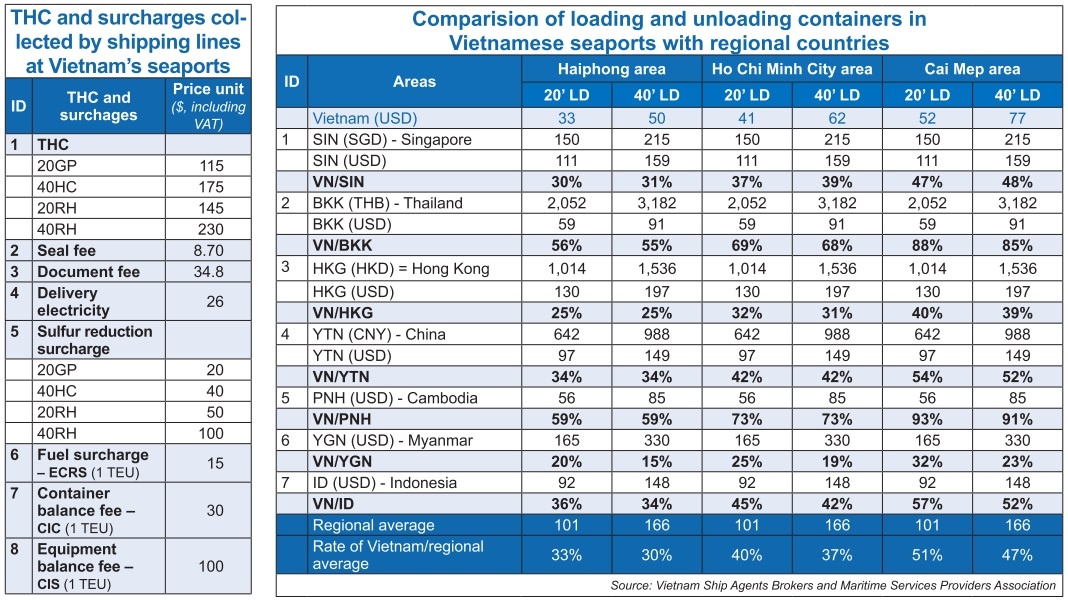 |
Shipping lines collect a THC surcharge at the rate of $114-140 per TEU, but only pay $33 to the port in Haiphong, $40 in Ho Chi Minh City, and $52 at Cai Mep and Lach Huyen ports, which are the cheapest fees in Southeast Asia. Currently, seaport enterprises in Cambodia charge up to $90, while Singapore charges $115 per container.
Foreign shipping lines enjoy a cheap loading fee, by paying about 30 per cent of THC to Vietnam seaports. While according to international practices and conventions, 80 per cent of THC collected by foreign shipping lines from import-export owners is used to pay the port to cover the costs directly related to loading.
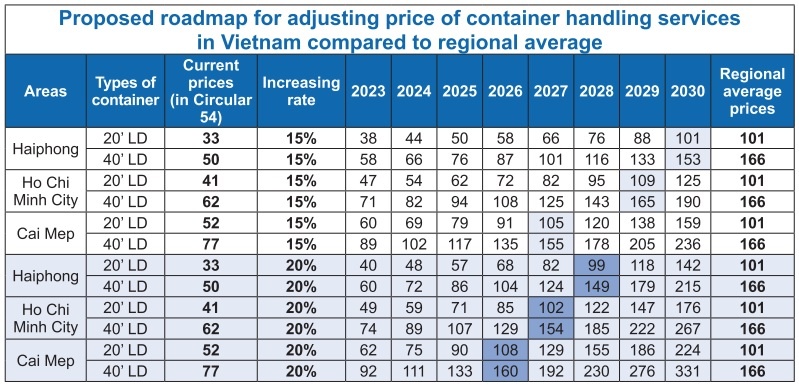 |
During the pandemic, although the loading price did not change, the freight rate increased 10-fold due to the lack of empty containers, and congestion at ports. More recently, freight rates slid back to the previous level according to market supply and demand.
“Moreover, the cost of price components has soared sharply over five years and the prices for loading containers regulated at present are no longer relevant,” Thuy added.
The adjustment is considered urgent for the Cai Mep deepwater port area, where more than 90 per cent of the output is transported by barge to Ho Chi Minh City, Binh Duong, and Dong Nai at a very low price of loading onto barges of $6 per TEU.
At a previous meeting with Vietnam Maritime Corporation on amending Circular 54, Minister of Transport Nguyen Van Thang asked businesses to work with related authorities and organisations in order toto evaluate the impact of increasing these prices and fees on the consumer price index, and other local and foreign enterprises.
Vietnam currently has a modern seaport system, meeting the import and export needs of the economy. The list includes 34 seaports, including two special-class ports, 11 seaports of first-class, seven seaports of second-class, and 14 seaports of third-class.
Cargo capacity is also improving, receiving more ships with largers tonnage. Vietnamese seaports in Haiphong, Ho Chi Minh City, and Ba Ria-Vung Tau are in the top 50 ports with the largest cargo throughput in the world. Gateway ports such as Lach Huyen (Haiphong), and Cai Mep (Ba Ria-Vung Tau) can receive the largest container ships in the world, up to over 200,000 DWT.
The total volume of goods transported through Vietnam’s seaports in 2022 was estimated at 733.18 million tonnes, up 4 per cent on-year. In which, exports reached 179.07 million tonnes, down 3 per cent; imported goods 209.26 million tonnes, down 2 per cent; and domestic cargo 342.79 million tonnes, up 12 per cent on-year.
In particular, the volume of container cargo through seaports last year was estimated at 25.09 million TEU, up 5 per cent on-year. The high growth of transport routes to China, Japan, South Korea, Southeast Asia, and Europe along with high sea freight rates in 2022 contributed to many Vietnamese shipping enterprises’ high increase in revenues and profit.
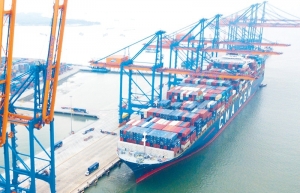 | Seaports lag behind regional peers Despite growing demands, Vietnam’s seaport development masterplan has been deemed inappropriate by experts, leaving much to be desired in the race to attain capital. |
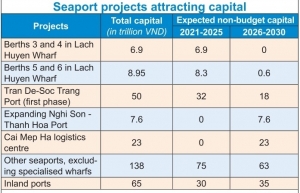 | Seaport ventures to rake in new funds The Ministry of Transport this month submitted a report requesting approval to implement the master plan for Vietnam’s seaport system for the 2021-2030 period. |
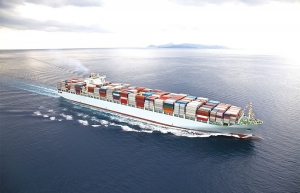 | Investors seek seaport access improvements While having interest in seaport projects, both domestic and foreign companies are seeking better infrastructure access and development of quality distribution and logistics centres before making concrete plans. |
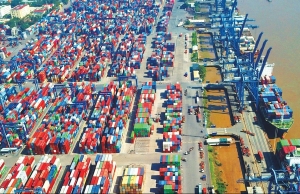 | Momentum for seaports hard to retain While complex global developments are affecting the performance of seaports, action is needed to ensure growth momentum. |
What the stars mean:
★ Poor ★ ★ Promising ★★★ Good ★★★★ Very good ★★★★★ Exceptional
Related Contents
Latest News
More News
- Businesses ramp up production as year-end orders surge (December 30, 2025 | 10:05)
- Vietjet chairwoman awarded Labour Hero title (December 29, 2025 | 13:06)
- How to unlock ESG value through green innovation (December 29, 2025 | 10:03)
- AI reshapes media and advertising industry (December 29, 2025 | 08:33)
- FPT and GELEX sign deal to develop blockchain tech for global markets (December 29, 2025 | 08:29)
- Vietnam’s GDP forecast to grow by 9 per cent in 2026 (December 29, 2025 | 08:29)
- Women entrepreneurs are key to Vietnam’s economic growth (December 29, 2025 | 08:00)
- Vietnam's top 500 value-creating enterprises announced (December 27, 2025 | 08:00)
- The PAN Group shaping a better future with ESG strategy (December 26, 2025 | 09:00)
- Masan Consumer officially lists on HSX, marking the next phase of value creation (December 25, 2025 | 13:20)

 Tag:
Tag:





















 Mobile Version
Mobile Version